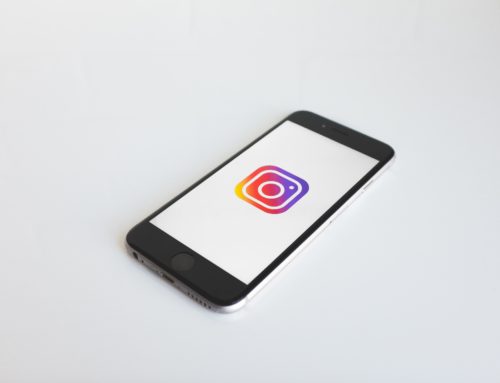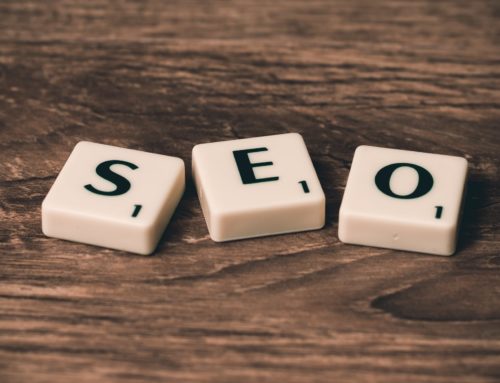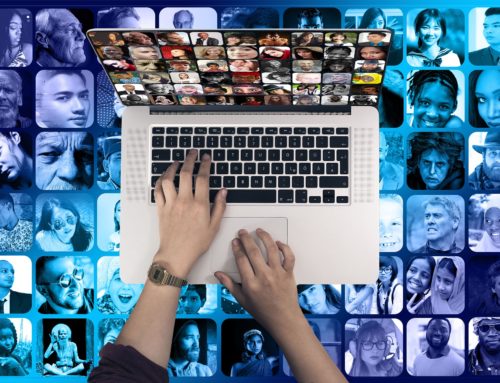 Guest Post by Shanan Sorochynski
Guest Post by Shanan Sorochynski
Of all the people you follow on Twitter what percentage have interests or values different than your own?
A recent visit to our campus by journalist Chantal Hébert and her lecture “Missing the Forest for the Trees: A Look at the State of Political Coverage in the Social Media Era” had me thinking about how I use these tools.
For those unfamiliar with Hébert, she is best know for her work as a weekly participant on the political panel At Issue on the CBC’s The National (in Canada The National is like … if it was food you’d spread it on toast and have it sustain you for life. It’s a big deal here).
She is also a national affairs writer with the Toronto Star, a guest columnist for Le Devoir and L’Actualité, and has been covering the major moments of Canadian politics since I was old enough to have a driver’s license.
One of the key messages of her lecture was that – in her experience – social media tends to narrow people’s perspective, not widen it.
The reason for this is that it is a tool that makes it very easy for people to customize the information they receive … and people, not surprisingly, tend to choose information that reinforces their own views.
“Once you are on a tour and covering a campaign you are looking on Twitter but the people who are on Twitter, they are junkies and so your mirror is not a window to the world,” said Hébert.
“It’s a mirror and it’s reflecting you to yourself. I have rarely seen the guy who delivers my mail and the person who takes my blood at the clinic tweet in between the two blood tests. And I haven’t noticed the teachers stop teaching to tweet.”
(SIDENOTE: That last line made me smile. I wanted to make the stage spin around like on the Price is Right to reveal the professors here who are using social media in the classroom. They are mindblowing. Anyway …)
Hébert’s comment made me think about how I use Twitter.
Initially I followed close friends and had a locked profile. Why? Because these were the days when we weren’t sure how Twitter was different than Facebook. So, we treated Twitter like Facebook, something for select eyes only.
That changed fairly quickly though. The value of public profiles was hard to ignore.
I started to look at social media as a powerful communication tool that could help me in my work, so I started following communication professionals to learn how best to do that.
Pretty soon the vast majority of the people I followed were communications, marketing and PR professionals. Sure, I jazzed things up by following people from different sectors (Higher Ed, corporate, not for profit). But, for the most part they were all people in my industry.
It certainly wasn’t a bad thing. I learned a lot. But, as the group got larger and larger the content in my feed became homogenized.
There was a handful of thought leaders and hundreds of people echoing them. Even though they were echoing intelligent things, it was still an echo.
Hébert described the people she was seeing on Twitter as a “super engaged, super interesting, but super disconnected audience.”
I’m still working out how to diversify my Twitter feed.
For now I’m following more people from my offline community: faculty, staff, students, people who live in my city.
How about you? What are you doing?
Image: chantel beam photography via Flickr, CC 2.0
 Shanan Sorochynski manages the University of Regina’s first official blog: YOURblog. Previous to this she was the managing editor of U of R Report, the University’s faculty and staff internal publication, and a print journalist in Manitoba.
Shanan Sorochynski manages the University of Regina’s first official blog: YOURblog. Previous to this she was the managing editor of U of R Report, the University’s faculty and staff internal publication, and a print journalist in Manitoba.








[…] Yesterday, Shanan Sorochynski asked a question here on WUL that struck a chord with quite a few people: “Are you using social media to talk to yourself?” […]
[…] Post: Are You Using Social Media to Talk to Yourself? by Shanan Sorochynski […]
It makes sense that people use social media to talk to people who are like themselves because we do that in face-to-face conversation, too. People are drawn to people similar to them, therefore on the internet, they’ll follow people with similar interests. We create our own bubbles, but because this world is so diverse and now so accessible through the internet, interacting with different people is a necessity. Social media should be a tool to converse with both types of people: similar to us and different. Thanks for posting!
[…] on Twitter or connecting with our Facebook business pages. You’re not there just to talk, and especially not to talk to yourself. You’re there for the purpose of interacting with your […]
@Shanan thanks for sharing this post Shanan – really thought provoking. Much like you, I started following industry professionals in PR and communications, and have branched out to include people with other non-professional related interests like cycling. That said, the people I follow, and who follow me tend to be from within these areas. The interesting this is that I’ve had some great discussions with people outside these areas. I guess it really comes down to how much you are open to engaging with others, and your willingness to learn and grow through the exchange of thoughts and opinions. For me, it’s all about being open to these new connections and willing to listen to others. Twitter (and social more broadly) is a great way to ‘meet’ such an incredible array of people … an opportunity and gift we shouldn’t underestimate.
[…] Why Protecting Your Twitter Profile is a Bad Idea February 8th, 2012 | Shonali Burke | 0 Comments TweetYesterday, Shanan Sorochynski asked a question here on WUL that struck a chord with quite a few people: “Are you using social media to talk to yourself?” […]
I’m a blender, I blend in easily without necessarily stating my position. I will certainly let you know my beliefs if you are that interested, but I’m more interested in listening and seeing what other people think and their point of view. Social has been the perfect platform for me to know a very wide range of people.
It is really interesting to see the parallels between our posts. Mine (http://barbergp.com/1295/) talks about how we need to make sure we read and understand other opinions. While some may not understand the importance of understanding another’s beliefs, without it we will never be able to collaborate and solve the problems facing us today. There is rarely a right and wrong but most often a blending of — say — red and yellow to create orange. It doesn’t really matter how you do it — separate handles, lists or a broad group of followers — it’s important to do. And, who knows, your own viewpoint might change. Thanks for a thoughtful post Shanan.
@mdbarber I disagree. There is right and wrong and a lot of grey in the middle. “Right” tends to be the idea that the majority of people in a community subscribe to. We’ve agreed as a society that – for the most part – murder is wrong. But, subjects like the death penalty are ones that not everyone agrees about. You can’t blend the two sides. There are no half-death scentences (Unless you are character in the Princess Bride . . . which would be awesome) Hearing a number of sides can inform your opinion, and that’s useful. But, I don’t think there is always a blending of “red and yellow to create orange.”
Princess Bride link: http://www.youtube.com/watch?v=xbE8E1ez97M
@Shanan I think we can agree there are issues where our own beliefs are black and white. We aren’t willing to bend on those. But there are also places for the people whose positions you and I might find more gray.
More importantly, we must be willing to listen to the other positions and open to other viewpoints. Our inability to do so is, in large part, why we’re in the mess we’re in right now. We have people camped unabashedly on the far right and the far left. They both believe they are right and won’t listen to each other in an effort to find common ground. When we don’t see or hear the noise from the other side, we are lulled into a false sense of security and we are unable to solve problems.
That was Shanan Sorochynski who came up with the question (and post), btw.
Ohhh, Shanan, look for a pingback tomorrow! You pushed me over the edge with your distinctly observant posts. Much appreciated, thank you.
@ShakirahDawud Cool. Thanks!
I am not surprised by this data Shanan. We do this in real life too. The Economist has shown that we tend to move to places with similar political and social views. Kansas draws social conservatives who don’t believe in evolution…ahem @ShellyKramer ;-) Austin has social liberals dallas social conservatives.
No different from Media consumption. If you listen to Rush Limbaugh I doubt you consume progressive media online, radio or TV. Same is the reverse. So this has nothing to do with social media vs media in general.
When I joined Twitter and the US Healthcare reform was underway and the tea party was cranking I set up a special account so I don’t have to censor my speech and I followed many people and US Congresspeople on both sides. So you can easily get the full spectrum but not sure everyone thinks thy should,
@HowieSPM @ShellyKramer I’m getting better at doing that as well. The difficulty I have is not segmenting things into extremes. So, for example I shouldn’t necessarily follow people on both the far left or right. There are more than two sides to most issues.
@HowieSPM Yes, about that, @ShellyKramer ? :p
Howie, setting up a different Twitter account the way you did is a really interesting idea… I wonder if more people are doing that now? Not that @Shanan was in her head, but mdbarber ‘s post today, about looking at the world through different filters, resonates here as well.
I wonder if there is a limit to how much “diverse” content we are willing/able to consume?
@Shonali @ShellyKramer @Shananmdbarber I found running more than one account plus a clients a bit tedious hard enough growing one community. But as per what Shanan said above we all should be open to connecting with people who have different views.
What I found interesting with my experiment was how the US Congress handled twitter. The Democrats tended (not always) to be more professional and less scare mongering. The Republicans were often seriously crazy. When the leader of the House tweets Obama is going to kill grandma I think ‘Don’t you know tweets are public and last a long time’?
@HowieSPM I can’t imagine managing multiple personal accounts Howie but if it worked for you that’s great. As you said, managing for clients and personal is hard enough. I think that what you’re said here about the Rs and Ds and their “voice” is another really good example of why we need multiple outlets. From where I sit, not All Rs are “seriously crazy” and not all Ds are “less scare mongering.” When we put an entire group of people into one bucket that we lose the ability to see areas of collaboration. I’m hoping for more of that listening and collaborating from Rs, Ds, Is, Ls and everyone in between. @Shonali @ShellyKramer @Shanan
Maybe you are right! I have added people on twitter who share the same interest and all; but then doesn’t it make more sense. I mean how much would I be interested in people saying something that doesn’t really interest me at all.
It does make sense when you think about the larger picture here, and how I would actually want to grow beyond what I am thinking or doing right now.
@Hajra I agree. You do need to follow people who interest you. While I do want other perspectives I won’t necessarily be following sports fans who post a lot of trivia or the person who writes about car engines. But, I might follow someone who lives in my city that comments about things I also experience (traffic, events, restaurants, taxes, new laws, etc.)
Hilarious title Shanan!
I think most people start off in social media talking to themselves. It would be interesting to know how many of these quit before they actually start ‘getting it.’
Thinking back, it’s not that obvious that you just start talking to folks. I guess the apprehension comes out of fear of not being accepted or looking stupid.
All bad reasons to not jump in. There’s a flavor for all on the social web.
Cheers to you!
@Mark_Harai Thanks. Jumping out of a comfort zone is not an easy thing to do. The one nice thing about Twitter though is that low-risk opportunities like scheduled chats and hashtags make it easier for strangers to connect.
As communications pros, we always talk about how social media is the door to the larger world, and it’s true. One of the pitfalls though, is exactly what you’ve described here, shanan_s. To truly unlock the power of social media, we must interact with people different from us. Different political views, different religious views, heck, even fans of different sports teams. The human experience is a rich and diverse mosaic. If we’re looking only at the portion of it that seems the most familiar, we’re missing the whole picture.
@MattLaCasse shanan_s The difficulty comes when we don’t realize we are not tuned in to the perspectives of others. I work at a university so there is great diversity in gender, class, nationality, language, etc. Simple things are interpreted differently by different people: alarms, people in uniform, bathroom infrastructure, schedules, greetings, etc.
Really thought provoking stuff, Shanan. It’s so important to open up and not be so one-dimensional. Thanks for this.
@KenMueller While it is important, I’m still figuring out how to do it.